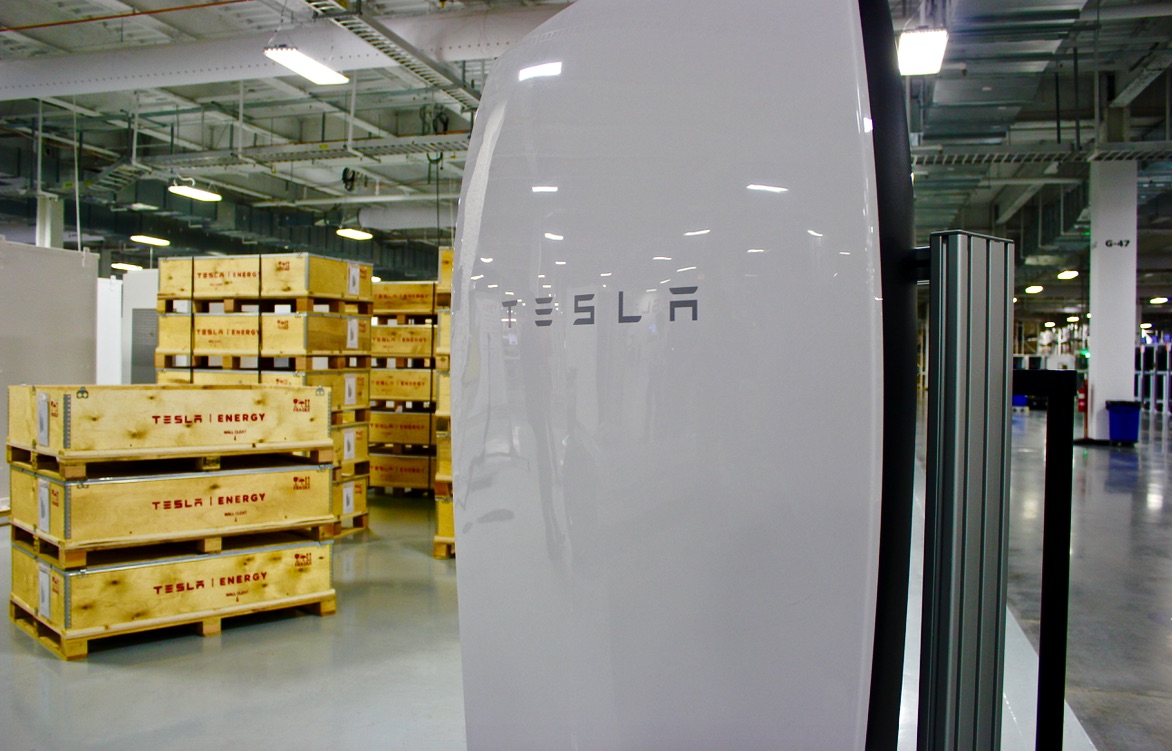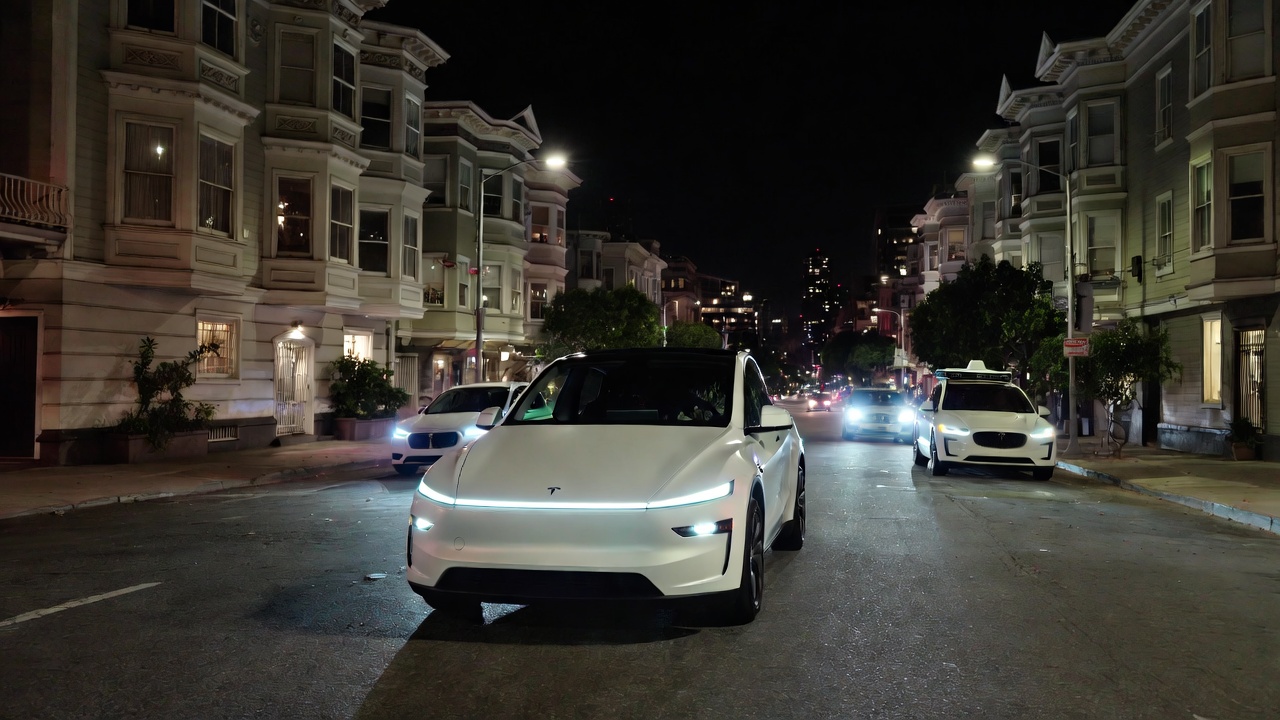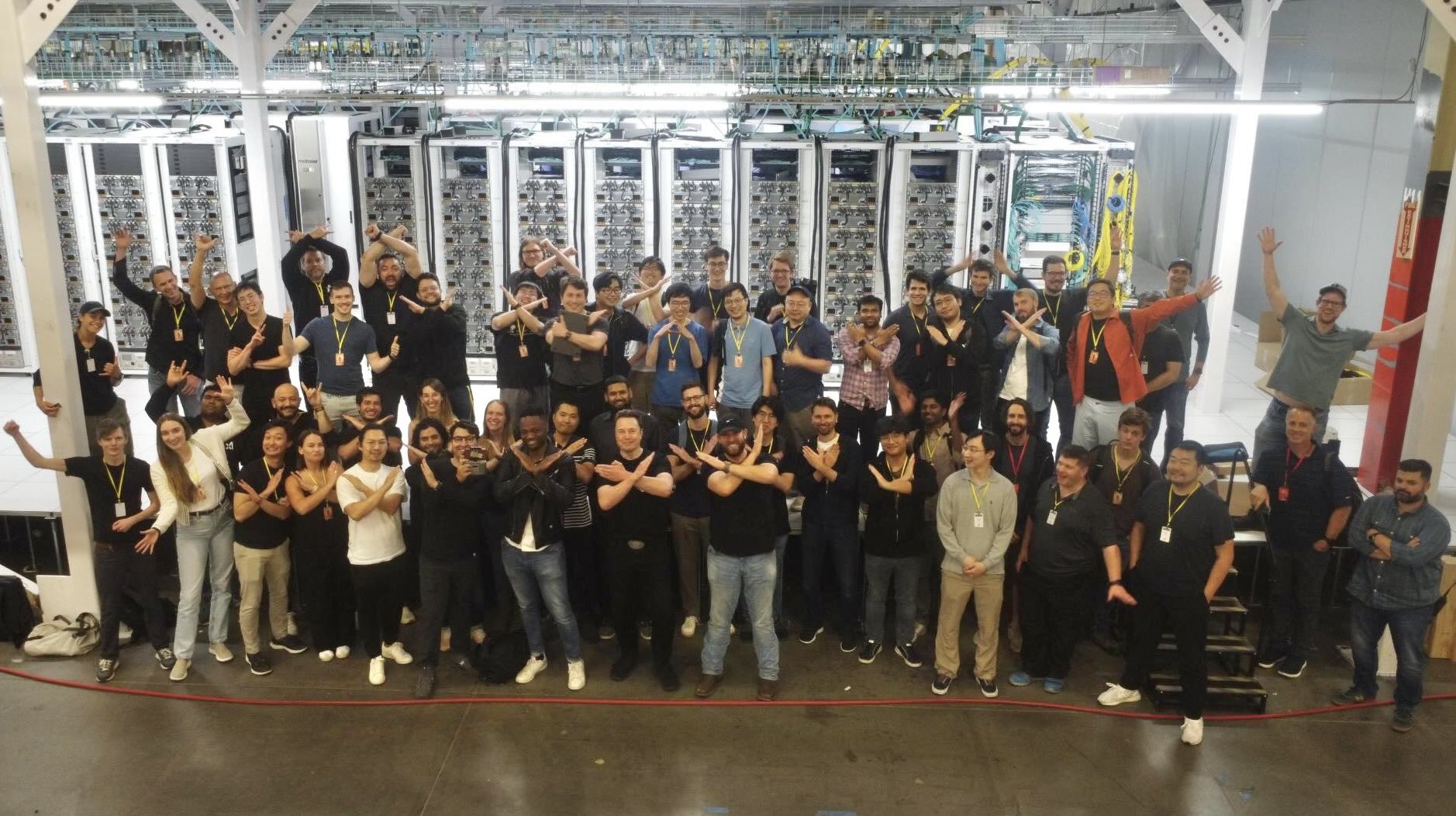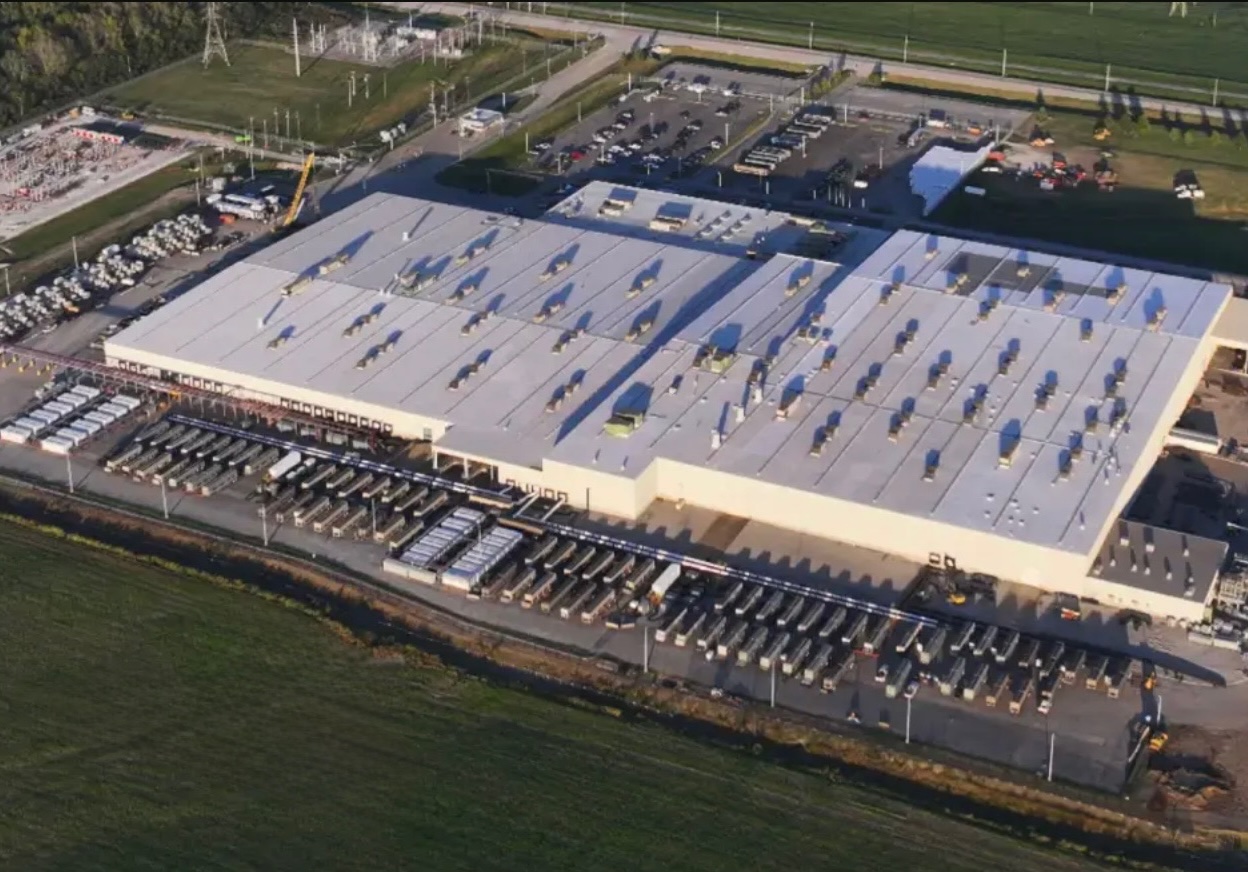News
Panasonic sees investment in Tesla and rechargeable batteries as ‘biggest growth driver’ for business

Panasonic’s investment in a Tesla battery partnership is causing the Japanese consumer electronics conglomerate to revise its annual profit forecast. That announcement came on October 31, at an earnings briefing in which the Panasonic Corporation attributed its diminished financial picture due to a stronger yen, some 12 billion of which are associated with the upfront factory investment toward Tesla’s $5 billion Gigafactory.
Three indicators contributed to Panasonic’s lowered projections.
- The July-September Panasonic operating profit came in at nearly 40 percent lower than previous year and about 14 percent divergent from analyst estimates.
- The Panasonic profit forecast for the year ending March 31 fell to 245 billion yen ($2.33 billion) from a previous projection of 310 billion yen.
- A Thomson Reuters Starmine SmartEstimate of 297.30 billion yen drawn from 16 analyst estimates is comparable to the revised Panasonic projections.
Panasonic plans to contribute up to $1.6 billion to produce electric vehicle and grid storage battery cells for Tesla. The Panasonic/ Tesla relationship is part of a larger network in which Panasonic supplies automotive batteries and other high-tech products to corporate customers.
Panasonic’s imminent negative profitability is being depicted as a transitional phase in the Corporation’s shift to smart technologies. “We are seeing strong demand for EV (batteries) not just from Tesla but various other automakers,” said Kazuhiro Tsuga, President of the Panasonic Corporation. “We see the rechargeable battery business as the biggest growth driver. So we are aggressively making upfront and strategic investment here.”
Tsuga had stated in his June 2016 message to shareholders that the corporation will continue to provide better living to its customers while also “aggressively” moving forward to become “a new Panasonic.” Based on a matrix that covers the three geographic regions of Japan, Europe, and Asia/ Africa overlaid onto the businesses of consumer electronics, housing, automotive, and B2B, the Panasonic Corporation tries to promote a growth strategy and R&D activities that generate new customer values and loyalties. The Corporation captures these aims through the “A Better Life, A Better World” slogan.
Panasonic’s 10-year vision focuses on artificial intelligence, energy storage and hydrogen energy, energy diversification, robotic home appliances, low carbon home energy solutions, autonomous driving, automotive energy solutions, and next-generation transportation, among others. Indeed, Panasonic’s interest in energy-saving home systems may soon be directed to solar cell production for Tesla. This next collaboration is, necessarily, contingent on Tesla’s acquisition of SolarCity.
As we reported last month, the growing partnership between Tesla and Panasonic on solar cell production and storage batteries may one day eliminate residential reliance on the power grid and provide the capacity to recharge electric cars each night. This melding of technology will almost certainly lead to an enhanced production ramp, possibly in late 2017 or even 2018.

News
Nvidia CEO Jensen Huang explains difference between Tesla FSD and Alpamayo
“Tesla’s FSD stack is completely world-class,” the Nvidia CEO said.

NVIDIA CEO Jensen Huang has offered high praise for Tesla’s Full Self-Driving (FSD) system during a Q&A at CES 2026, calling it “world-class” and “state-of-the-art” in design, training, and performance.
More importantly, he also shared some insights about the key differences between FSD and Nvidia’s recently announced Alpamayo system.
Jensen Huang’s praise for Tesla FSD
Nvidia made headlines at CES following its announcement of Alpamayo, which uses artificial intelligence to accelerate the development of autonomous driving solutions. Due to its focus on AI, many started speculating that Alpamayo would be a direct rival to FSD. This was somewhat addressed by Elon Musk, who predicted that “they will find that it’s easy to get to 99% and then super hard to solve the long tail of the distribution.”
During his Q&A, Nvidia CEO Jensen Huang was asked about the difference between FSD and Alpamayo. His response was extensive:
“Tesla’s FSD stack is completely world-class. They’ve been working on it for quite some time. It’s world-class not only in the number of miles it’s accumulated, but in the way it’s designed, the way they do training, data collection, curation, synthetic data generation, and all of their simulation technologies.
“Of course, the latest generation is end-to-end Full Self-Driving—meaning it’s one large model trained end to end. And so… Elon’s AD system is, in every way, 100% state-of-the-art. I’m really quite impressed by the technology. I have it, and I drive it in our house, and it works incredibly well,” the Nvidia CEO said.
Nvidia’s platform approach vs Tesla’s integration
Huang also stated that Nvidia’s Alpamayo system was built around a fundamentally different philosophy from Tesla’s. Rather than developing self-driving cars itself, Nvidia supplies the full autonomous technology stack for other companies to use.
“Nvidia doesn’t build self-driving cars. We build the full stack so others can,” Huang said, explaining that Nvidia provides separate systems for training, simulation, and in-vehicle computing, all supported by shared software.
He added that customers can adopt as much or as little of the platform as they need, noting that Nvidia works across the industry, including with Tesla on training systems and companies like Waymo, XPeng, and Nuro on vehicle computing.
“So our system is really quite pervasive because we’re a technology platform provider. That’s the primary difference. There’s no question in our mind that, of the billion cars on the road today, in another 10 years’ time, hundreds of millions of them will have great autonomous capability. This is likely one of the largest, fastest-growing technology industries over the next decade.”
He also emphasized Nvidia’s open approach, saying the company open-sources its models and helps partners train their own systems. “We’re not a self-driving car company. We’re enabling the autonomous industry,” Huang said.
Elon Musk
Elon Musk confirms xAI’s purchase of five 380 MW natural gas turbines
The deal, which was confirmed by Musk on X, highlights xAI’s effort to aggressively scale its operations.

xAI, Elon Musk’s artificial intelligence startup, has purchased five additional 380 MW natural gas turbines from South Korea’s Doosan Enerbility to power its growing supercomputer clusters.
The deal, which was confirmed by Musk on X, highlights xAI’s effort to aggressively scale its operations.
xAI’s turbine deal details
News of xAI’s new turbines was shared on social media platform X, with user @SemiAnalysis_ stating that the turbines were produced by South Korea’s Doosan Enerbility. As noted in an Asian Business Daily report, Doosan Enerbility announced last October that it signed a contract to supply two 380 MW gas turbines for a major U.S. tech company. Doosan later noted in December that it secured an order for three more 380 MW gas turbines.
As per the X user, the gas turbines would power an additional 600,000+ GB200 NVL72 equivalent size cluster. This should make xAI’s facilities among the largest in the world. In a reply, Elon Musk confirmed that xAI did purchase the turbines. “True,” Musk wrote in a post on X.
xAI’s ambitions
Recent reports have indicated that xAI closed an upsized $20 billion Series E funding round, exceeding the initial $15 billion target to fuel rapid infrastructure scaling and AI product development. The funding, as per the AI startup, “will accelerate our world-leading infrastructure buildout, enable the rapid development and deployment of transformative AI products.”
The company also teased the rollout of its upcoming frontier AI model. “Looking ahead, Grok 5 is currently in training, and we are focused on launching innovative new consumer and enterprise products that harness the power of Grok, Colossus, and 𝕏 to transform how we live, work, and play,” xAI wrote in a post on its website.
Elon Musk
Elon Musk’s xAI closes upsized $20B Series E funding round
xAI announced the investment round in a post on its official website.

xAI has closed an upsized $20 billion Series E funding round, exceeding the initial $15 billion target to fuel rapid infrastructure scaling and AI product development.
xAI announced the investment round in a post on its official website.
A $20 billion Series E round
As noted by the artificial intelligence startup in its post, the Series E funding round attracted a diverse group of investors, including Valor Equity Partners, Stepstone Group, Fidelity Management & Research Company, Qatar Investment Authority, MGX, and Baron Capital Group, among others.
Strategic partners NVIDIA and Cisco Investments also continued support for building the world’s largest GPU clusters.
As xAI stated, “This financing will accelerate our world-leading infrastructure buildout, enable the rapid development and deployment of transformative AI products reaching billions of users, and fuel groundbreaking research advancing xAI’s core mission: Understanding the Universe.”
xAI’s core mission
Th Series E funding builds on xAI’s previous rounds, powering Grok advancements and massive compute expansions like the Memphis supercluster. The upsized demand reflects growing recognition of xAI’s potential in frontier AI.
xAI also highlighted several of its breakthroughs in 2025, from the buildout of Colossus I and II, which ended with over 1 million H100 GPU equivalents, and the rollout of the Grok 4 Series, Grok Voice, and Grok Imagine, among others. The company also confirmed that work is already underway to train the flagship large language model’s next iteration, Grok 5.
“Looking ahead, Grok 5 is currently in training, and we are focused on launching innovative new consumer and enterprise products that harness the power of Grok, Colossus, and 𝕏 to transform how we live, work, and play,” xAI wrote.








